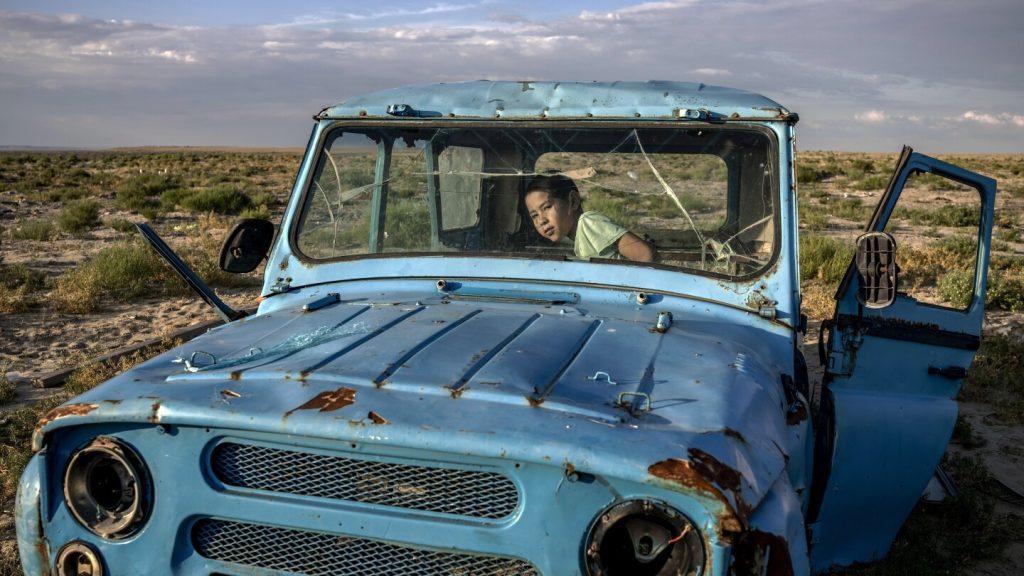In small pockets along the Aral Sea, signs of life can still be seen despite the sea’s near disappearance and the large communities it once sustained being no more. Some small towns and villages remain, with populations as low as 10 people, where new cafes, clothing stores, and bodegas have popped up. The streets may be empty during hot days, but they come to life as the sun sets, with children playing soccer, teenagers making videos, and old men playing cards. Techno music and carnival games add to the atmosphere during local festivals.
Reminders of the once-mighty Aral Sea can still be found in the scattered towns and villages. Old fishing nets and buoys lie in backyards, while rundown trucks serve as playgrounds for children. Dust storms are a regular occurrence, sending people indoors, but as they pass, families gather as a community once again. Trains run around the clock, bringing returning residents and first-time visitors who visit museums showcasing Aral artifacts and leave their mark in guestbooks.
Despite the challenges and the disappearance of the Aral Sea, people in these small communities continue to find ways to thrive. They enjoy festivals, social gatherings, and everyday activities such as playing sports, making videos, and enjoying the local cuisine. The changing landscape is evident in the replacement of Soviet-era billboards with metal signs and the transformation of the area into a place where life persists despite the environmental changes.
The effects of climate change and restoration efforts in the region are clear as people work to adapt to a landscape vastly different from what it once was. The AP visited both sides of the Aral Sea in Uzbekistan and Kazakhstan to document the changing landscape and the lives of those who have lived and worked on its shores. Despite the challenges they face, these communities show resilience and a determination to continue living their lives in a region that has been drastically altered by environmental factors.
Amidst the ruins of the once-mighty Aral Sea, there is still hope and a sense of community that binds these small towns and villages together. The people find ways to adapt, celebrate, and make the most of their surroundings, creating a sense of normalcy amidst the changing landscape. As they navigate the challenges of living in an area deeply affected by climate change, they find joy in simple pleasures and continue to build a life beyond the sea that once sustained them.
The struggle to maintain a sense of normalcy and build a future in the wake of the Aral Sea’s disappearance is evident in the resilience and spirit of the people who call this region home. Trains bringing residents and visitors, festivals, and social gatherings all contribute to a sense of community and connection that persists despite the challenges. The transformation of the landscape and the adaptability of the people who live there are testaments to the human spirit and the ability to find hope and joy in even the most challenging circumstances.


